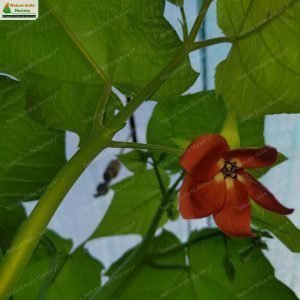Madhuca longifolia var. longifolia, commonly known as South Indian Mahua, is a medium to large deciduous tree native to the Indian subcontinent, including India, Nepal, Myanmar, and Sri Lanka. It thrives in tropical and subtropical regions, often found in dry deciduous forests, moist deciduous forests, and semi-evergreen forests. This tree can grow up to 30 meters tall with a trunk diameter of up to 80 cm. The tree has a large, spreading, rounded crown and evergreen or semi-evergreen foliage.
The leaves are narrow and lens-shaped, stiff, thick, and hard, with a woolly underside. The flowers are small, white or greenish-white, and fragrant, typically blooming in clusters. The fruits are greenish-yellow, ovoid, and contain one to four lustrous, oily brown seeds. The tree plays a crucial role in the ecosystem, attracting pollinators and providing food and habitat for various wildlife species.
Habitat
Madhuca longifolia var. longifolia is native to the Indian subcontinent and thrives in tropical and subtropical regions.
Planting and Care
-
Soil: Prefers well-drained loamy or sandy-loam soils but can also grow in shallow stony, clayey, and calcareous soils.
-
Sunlight: Requires full sun exposure.
-
Watering: Needs moderate watering, with care to avoid waterlogging.
-
Propagation: Can be propagated by seeds or cuttings. Seeds should be sown in a well-draining medium and kept moist, while cuttings should be taken from mature branches and planted in a moist, well-draining medium.
Additional Information
-
Traditional Medicine: Various parts of the tree are used in traditional medicine to treat ailments such as fever, headaches, and diabetes.
-
Edible Products: The flowers are used to produce a sweet syrup and an alcoholic beverage, while the seeds yield oil used in cooking and as a biofuel.
-
Timber and Other Uses: The wood is used for construction and furniture, and the seed cake, a byproduct of oil extraction, is used as fertilizer.
-
Wildlife Support: The tree provides food, shelter, and habitat for numerous species, contributing to biodiversity.




